How do I get a sponsor? This question is a sign of the arrival of spring. These questions arrive in my mailbox by the dozens right now. Next period will be in August and September.Especially if you are a bidding touring cyclist from the northern countries. I have written about this complicated issue before, but it is always good to get a fresh set of eyes on everything. And whilst browsing Twitter for news from the Arab World, I instead came across Tom Allen´s great piece on sponsorship and it applies to all categories of exploration and adventure. Best post on the subject I have seen! After reading this, what more is there to know?
How to Get Sponsors for Your Cycle Tour
by
Tom Allen
When planning an extended cycle tour, many people go in search of corporate sponsorship. Some come back empty-handed. Some are successful. But let’s be realistic: In the world of expeditions and corporate sponsorship, bike trips are small fry. Let’s approach the topic on this premise.
Andy and I managed to procure product sponsorship for most of our major pieces of equipment, and this article will explain how we went about it, and what worked and what didn’t. I hope that it will save you some time and increase your chances of success.
But before deciding whether or not to pursue sponsorship for your trip, you need to decide whether your time would be better spent working in a full-time job to earn the equivalent amount of money. Seeking sponsorship is an intensely time-consuming, frustrating and regularly disappointing process, for which you will need skin like old boot leather, the persistence of black shower mould and absolutely no hobbies or significant others to attend to.
So, without further ado – the Key Ingredients:
- You need at least one Unique Selling Point.
- Show that the sponsoring company is going to benefit from their involvement.
- Prove that you can follow through with your plan, or at least be very convincing.
- Choose who you approach very, very carefully.
- Cheek and luck + persistence and enthusiasm = success.
Let’s have a look at these points in a little more detail.
This is taken directly from Marketing 101. If you are planning to simply cycle round the world for the sake of it, no matter how noble an idea that is, you would be lucky to find someone willing to help you. You are just another round-the-world bicycle ride, of which there have been hundreds – why would people take special notice of you? What’s the hook?
If you are motivated towards a charity fund-raising effort and have got yourself some media coverage, things are getting a little more interesting. But what really sets apart the successful, high-profile expeditions is a unique objective or twist to the tale. An Aussie cyclist wanted to bike solo across the three great uninhabited deserts of Australia. Englishman Craig Hughes cycled through Northern Europe visiting towns whose names began with each letter of the alphabet. Scotsman Marc Beaumont decided to break the world record. And so on.
We had one unique objective to our expedition – to make a feature film about a long-distance, multi-year bicycle journey. A real travellers’ tale, not a sports documentary. No such thing had yet been published. (The closest thing I’ve seen since is Rob Lilwall’s cool mini-series.)
This, however, is where the strings start attaching themselves. If you’re selling your project on a high concept, the investment of your sponsors makes the commitment to the cause far greater than one of pride alone. If what you want is flexibility, the ability to change plans on a whim and travel on your own terms, you’re probably best off funding yourself, or finding some very, very laid-back supporters.
This is the primary thing that a potential sponsor will assess, generosity and goodwill aside. How will the company benefit from involvement with your trip? With us, the answer was obvious – the sponsored product would appear in the film, which was likely to reach a wider audience than the website alone. This wasn’t a fail-safe card to play, though – many companies were unable to see the long-term benefits of this, or had too little faith that it would actually come to fruition. Every company takes this kind of risk when they enter into sponsorship.
We demonstrated our commitment to publicizing our expedition well in advance of the trip. We spent a lot of time researching and writing press releases, making media contacts and getting our plans published in as many places as possible – local newspapers, radio interviews, the BBC website, Adventure Cycling magazine, and many more local and national outlets. Our crowning achievement was a 5-minute slot at the end of the regional BBC 6 o’clock news bulletin a few days before we left for the UK!
We also built a comprehensive website, and the effectiveness of this can’t be understated at the time of proposal. Since then, our sponsors have benefitted from having their products feature throughout our story, and having been reviewed (in most cases positively) on our popular equipment pages which draw a great deal of search-engine traffic.
What else can a company gain from your project, other than brand association through media outlets? Well, you can give them something to use themselves. We proposed to all our sponsors that we would send them expedition updates by email, including the story so far, links to photo resources and information about publicity that we’d had on the way. Many of them use this material in their own publicity – it’s great reading material for potential customers, as it’s essentially a compelling human story amidst a lot of shiny bits of metal.
Some companies will also be interested in you from a product-development perspective. If you are happy to test prototypes to destruction and provide feedback, as we’ve done with fringe bike-trailer makersExtrawheel, you become part of an R&D effort as well as a brand ambassador. It’s been rewarding to see the progression of Extrawheel’s trailer design and the effect our input has had.
We had no history of daredevil expeditions to show to potential sponsors. For this reason, early attempts were met with doubt. We had to rely on enthusiasm and well-informed dialogue to get the ball-rolling. Our months of research into every aspect of cycle-touring came in very useful, as we were able to show that we knew what we were in for, and that we knew what we wanted.
If you have successfully completed such projects in the past, then you have a nice head-start. But approaching a company with such a plan, with no previous experience, will sound ludicrous. It’s essential that if you reach the second stage and receive an interested response, you know what you’re talking about. You need to know exactly what you want from the company.
When we were talking with Kona, they were impressed and reassured that, for example, we asked for 8-speed cassettes rather than 9-speed, steel frames, and 26-inch wheels, and explained why in each case. We also elaborated on our route ideas. In reality, we had no idea what we were in for! But the important thing was confidence and preparation.
Small details like this are important to convince your potential sponsor that you know what you’re doing, and that you’re going to follow through with your plans. Again, having some good media exposure at this stage will also help, because the more people know about your plans, the less space you’ll have to suddenly change them (although it can be done, as we hopefully demonstrated and justified).
A well-designed website helped us a lot; this was a regular focus for positive comments. It was often the first port-of-call for marketing managers reading our emails, and displaying already-secured sponsors’ logos consolidated our legitimacy no end.
There a certain inertia to the process – once one established name is on board, others will follow. We approached Wheels4Life and The Wilderness Foundation with our plans, and set up a stall at One Life Live, a ‘new beginnings’ exhibition in Earls’ Court, London. That’s when things really started happening.
Some companies care about cycling, or outdoor expeditions, or whatever their field of business is; and community-fostering and social involvement. Others care more about profit margins. You will quickly learn which category a company falls into. Generally, the bigger the company, the more the swing towards the latter will be. Use this knowledge to your advantage.
As well as this, before you carpet-bomb the corporate world with proposals, think very hard about each company you contact. If you’re sending out emails, then you have one chance alone to make an impact. You might as well expend this energy contacting a smaller number of companies that you would truly like to see involved with your expedition, and who really have the product that you desire, rather than sending carbon copies to thousands of companies who might fall under some industry related to your trip. The frenzy of ‘free stuff’ can initially be difficult to ignore, but do you really want a glow-in-the-dark saddle that you’re never going to use?
There is an ethical dilemma here as well. I was loathe to be associated with some of the companies that we considered contacting. So we didn’t contact them. Even if Halfords, the likes of whom have put countless local bike shops out of business, had wanted to sponsor us, I would rather be promoting a smaller, more focused company who invested real human passion in their work, like the wheelbuilders at the family-run Leisure Lakes Bikes. We also focused on companies who showed their commitment to good ethics and social activism, such as Kona with the Kona Bike Town and AfricaBike schemes.
There is a balance to strike here between this ideal and the reality – all companies need to make money somehow. You’re going to help them do this.
The essential thing is building relationships on a personal level. This means making contacts and approaching real people, rather than ‘info-at’ email addresses. Just talking to people about our ideas led to pretty much all of our sponsorship, directly or indirectly. In contrast, the endless hours – days – of sending emails were pretty fruitless. It is far more rewarding to be personally in contact with a company director, and it leads to far more reciprocal benefits on both sides.
It’s often said that there are forces beyond our understanding that drive the world. The truth is not supernatural – it’s a fact that human beings are innately altruistic towards those with whom they empathise, and that people are now connected by far fewer links than we would normally suppose. Word gets around faster than you imagine.
With that in mind, consider meeting a) someone who was trying desperately hard to get as much free equipment as possible, or b) someone whose life’s dream was to cycle round the world, and who wasn’t afraid to enthuse about making this dream happen. Who would you rather help?
Example 1: By the end of 2006 I had dedicated my existence to making my dream reality, telling everyone I met about my plans and showing uninhibited how enthused and excited I was. Quite unexpected things began to happen.
Whilst working in the French Alps that December, I met a man who held a top role at the WWF conservation NGO, and his family. He was so impressed by my plan that he invited me to visit the WWF HQ near Geneva, Switzerland, to talk about the expedition.
Just before I went there, he called me to tell me that he’d been on the plane recently and had got chatting about my plans to the guy next to him, who happened to be the boss of the European branch of Kona Bikes, and did I want to meet him? (Yes!)
In Switzerland, we sat in the sun and chatted for the afternoon about it all. I returned to England with the promise of anything I needed from the current Kona range, and a variety of film-related ideas withkonaworld.tv as well.
All because I talked to a stranger about my ideas. You never know who’s listening.
Talk to everyone, no matter what you think will happen. Show them that you have a dream. When you do this, “the world conspires to help you”.
Example 2: Andy went on MySpace in search of other young environmentalists, found out about the One Life Live exhibition in March 2007, sent a message to the organiser and was freely given a 40-square-foot patch of floor space in one of London’s biggest exhibition halls.
We spent 3 days there surrounded by a variety of bikes and equipment we’d quickly cobbled together. We slept in the boot of my parents’ car (never again!) and took showers in the local leisure centre. We told visitors that we weren’t selling anything and that we just wanted to tell people about our ideas. We arranged to meet Hans Rey, founder of Wheels4Life, and a representative from The Wilderness Foundation. We also met two like-minded young entrepreneurs and went for a drink with them.
A few weeks later, I got a call from a strange man who said he was from a production company and did we want to meet them in London to talk about possibly filming the journey? He’d heard about us from a guy he’d met at a networking session who had heard about us from one of the two people we’d gone for a drink with after the exhibition, and thought it sounded like a good project to get his production company up and running. We met them and are now filming the first feature-length documentary of a long-term cycle tour. All because Andy went on MySpace.
Things will happen by themselves, once you surround yourself by people with similar focus. Don’t sit in front of your email account. Take every opportunity you can to get out into the world.
Example 3: We spend hours, and hours, and hours, and hours (you get the idea) sending near-identical emails to every bike shop, bike maker, accessory manufacturer, mail-order company, etc we could find – thousands – asking if they would help by sponsoring us in some way. We received practically nothing in return.
Emails can be (and usually are) ignored or deleted. Nobody knows who you are until you meet them.
Now go and ride.
Tom Allen is not only an accomplished cyclist but a very good writer. His site is full of interesting reading material. http://tomsbiketrip.com

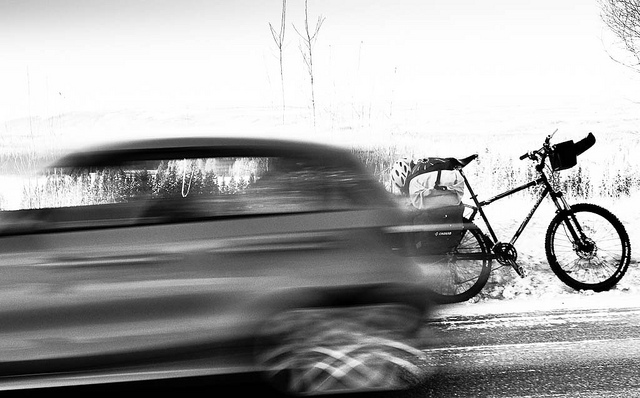

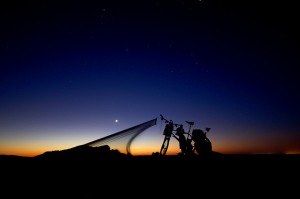
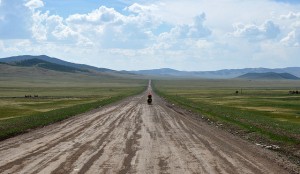
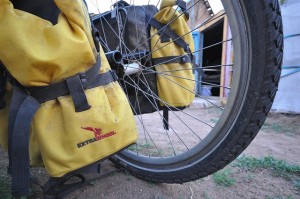
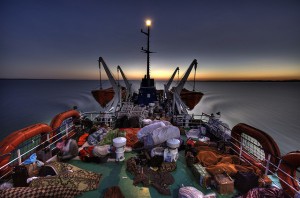
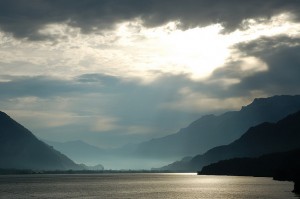
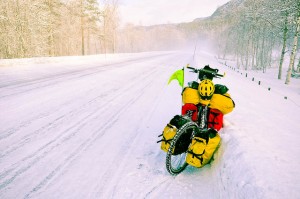

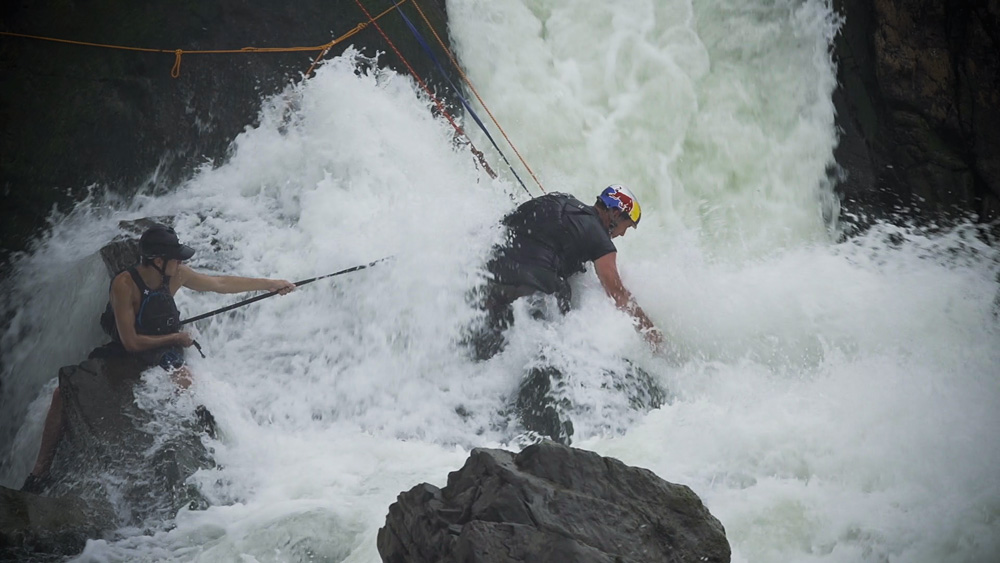
I am planning a solo 1350 mile bike ride to Comicon 2012, no real or prior biking experience. I will be suited up as a Star Wars character and hope to build a strong Facebook, Myspace, and Twitter following. I’m hoping that G4 Tv network will catch on to the idea and have people keep track of me through their feeds. This information in your article really helped. I am also thinking of making this a short of journeyed documentary, indie-cult-nerd-culture film. I’m very enthusiastic about this and am trying to avoid the gas price of riding from San Antonio, Tx, to San Diego, CA. I may change my destination to Los Angeles because of safety issues along the border of the latter dutch of my route. Somehow, seeing a Storm Trooper on a bicycle, in the heart of a land of drug lords might come across as… Unwanted? Anyway, you probably will never read this. Thanks, again.